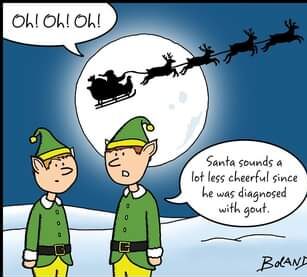For some patients, no matter how much time you spend interviewing and examining them or how many tests you order, you will simply not reach a final diagnosis. It’s not the job of an emergency medicine provider to diagnose everyone, and it’s a fine line to balance doing enough to rule out the bad with doing a full and thorough search for the right diagnosis. At some point, you have to abandon ship and hope the patient will be responsible enough to make sensible decisions: to see their primary care physician and to follow return precautions if things worsen. Given the season, take the flu for instance. Everyone with flu-like symptoms need not rush to the emergency room. Certain subgroups of patients notwithstanding, options for treatment of the flu are limited. To sit in a waiting room for hours, potentially infecting others, acquiring others’ infections, and plugging up the throughput, is counter-productive. On top of that, a rapid influenza test has a sensitivity approaching 50% on a good day. In a patient with flu-like symptoms and a negative rapid test, the final diagnosis is nebulous: bronchitis vs upper respiratory infection vs pneumonia vs influenza vs influenza-like illness vs viral syndrome vs … you get the idea. Use whatever ICD code you wish, the point is there’s some type of infectious process and we don’t know precisely what to call it. Fortunately, influenza is not one of the “can’t miss” ED diagnoses.
In a recent lawsuit, an 11-year old boy presented to the ED with three days of intermittent right-sided lower abdominal pain. He had no fever, nausea, or loss of appetite. WBC was normal. An ultrasound of the abdomen was done to evaluate for appendicitis. The final read stated: “appendix not visualized, no free fluid, clinical correlation recommended”. The patient was sent home and returned less than 48 hours later with a ruptured appendix.
The defense argued that, while a CT scan could have been done, LOOK AT OUR CHART! There was well-documented decision-making, and even if the decision was wrong, it was not negligent. Trying to avoid exposing children to radiation is in vogue nowadays – and to claim that failing to order a CT scan on an 11-year old was below the standard of care would be a tough argument to make. Also, damages were minimal. The child healed fine. At most he spent an extra couple days in the hospital but there were no long-term complications. The case was dropped.
You don’t have to do a billion dollor workup on everyone. But if you order a test and the result is inconclusive, either follow through by ordering additional tests or engage in shared decision-making. If your clinical suspicion is low, tell the patient/family that. Let them make an informed decision and document your discussion. The books would say you should consider an MRI. There’s a difference between practical medicine and guidelines.
From UptoDate “Acute Appendicitis in Children”:
“If the appendix is not visualized or the findings on US are otherwise not diagnostic, the patient may either be observed with serial physical examinations and repeated imaging (US, computed tomography [CT], or magnetic resonance imaging [MRI]) performed at a later time. If a clinical diagnosis of appendicitis cannot be made or, if more prompt diagnosis is desired, the patient may directly proceed to contrast-enhanced CT or MRI.”




